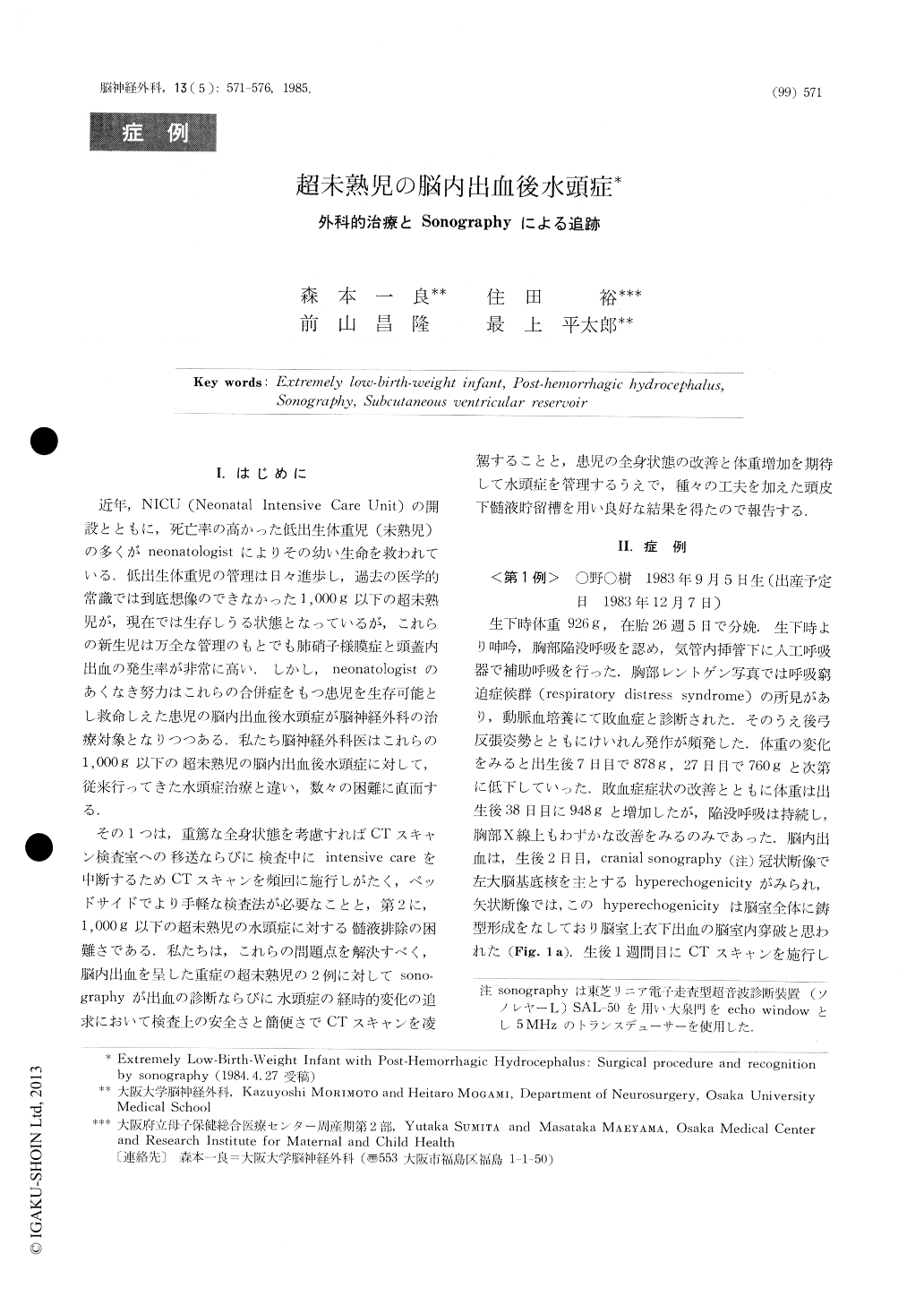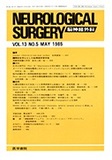Japanese
English
- 有料閲覧
- Abstract 文献概要
- 1ページ目 Look Inside
I.はじめに
近年,NICU(Neonatal Intensive Care Unit)の開設とともに,死亡率の高かった低出生体重児(未熟児)の多くがneonatologistによりその幼い生命を救われている.低出生体重児の管理は日々進歩し,過去の医学的常識では到底想像のできなかった1,000g以下の超未熟児が,現在では生存しうる状態となっているが,これらの新生児は万全な管理のもとでも肺硝子様膜症と頭蓋内出血の発生率が非常に高い.しかし,neonatologistのあくなき努力はこれらの合併症をもつ患児を生存可能とし救命しえた患児の脳内出血後水頭症が脳神経外科の治療対象となりつつある,私たち脳神経外科医はこれらの1,000g以下の超未熟児の脳内出血後水頭症に対して,従来行ってきた水頭症治療と違い,数々の困難に直面する.
その1つは,重篤な全身状態を考慮すればCTスキャン検査室への移送ならびに検査中にintensive careを中断するためCTスキャンを頻回に施行しがたく,ベッドサイドでより手軽な検査法が必要なことと,第2に,1,000g以下の超未熟児の水頭症に対する髄液排除の困難さである.
In two infants admitted to the neonatal intensive care unit with birth-weight of less than 1,000g, serial cranial real-time sonograms were obtained to determine the subependymal germinal matrix hemor-rhage and follow up the post-hemorrhagic hydroce-phalus, compared with computerized tomographic scan. This paper reports the results of the placement of a subcutaneous ventricular reservoir in these ex-tremely low-birth-weight infants to resolve progressivepost-hemorrhagic hydrocephalus and protect their cortical mantle until their risks of ventriculo-peritoneal shunting procedure are acceptable.

Copyright © 1985, Igaku-Shoin Ltd. All rights reserved.


